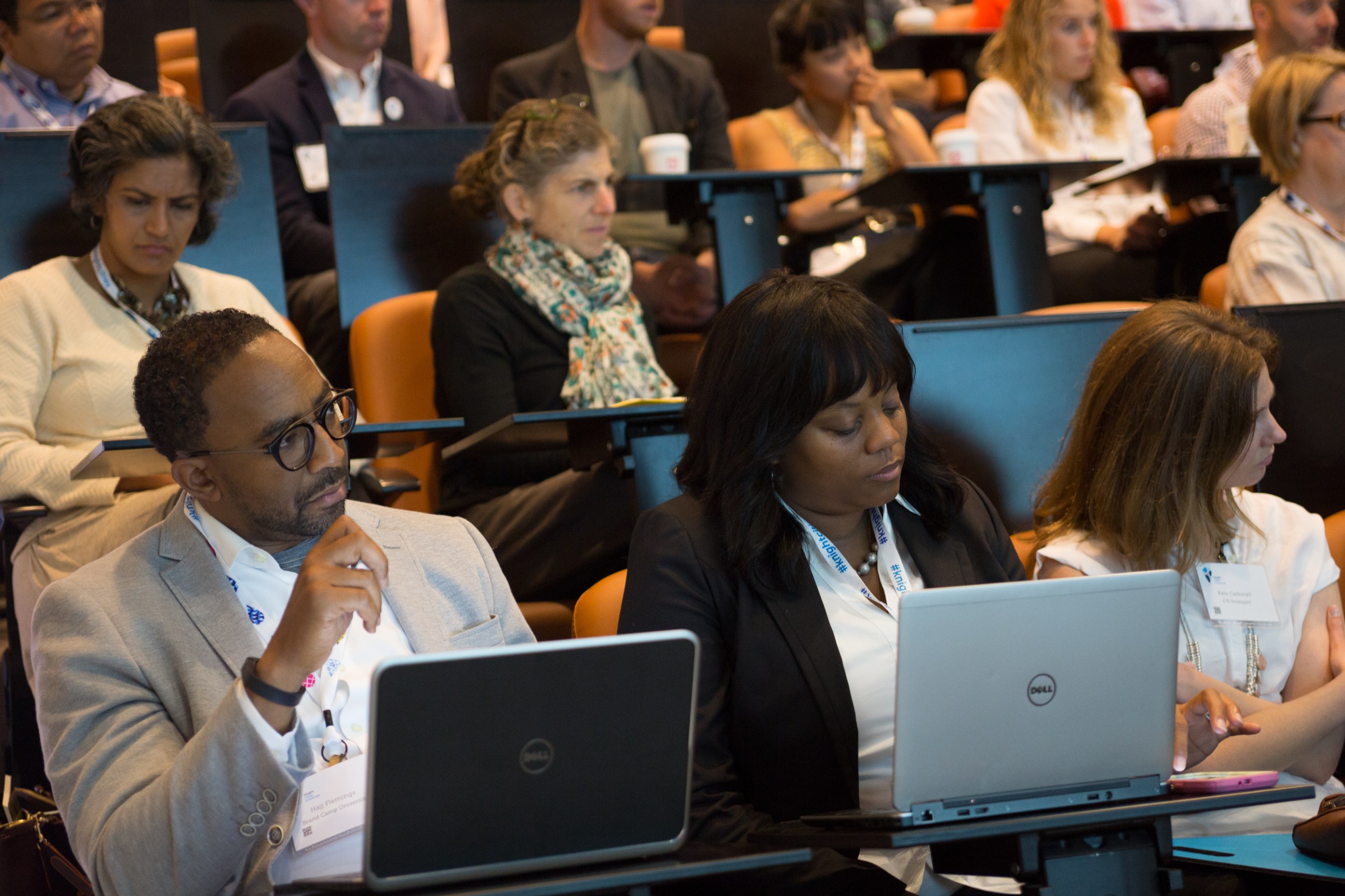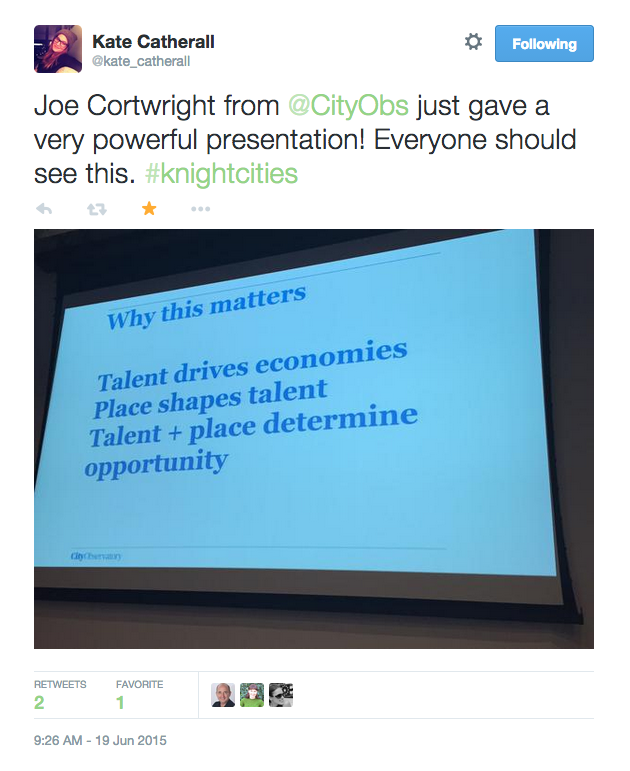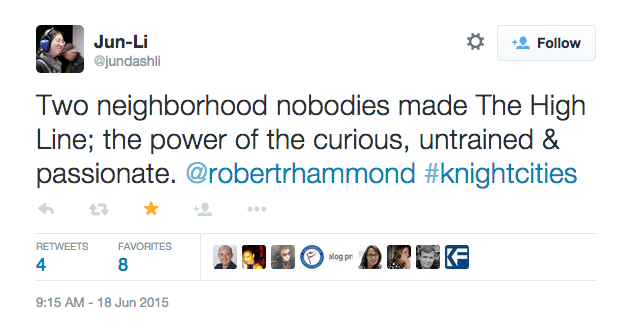
What makes a city successful: Lessons from the Knight Cities Summit
What does it take to make a city more than a collection of buildings and bodies? How can we ensure they are vibrant places to both live and work?
That’s a serious challenge. But free up a little money and see what ordinary city dwellers think up. It’s remarkable what happens.
The Knight Cities Challenge Summit that wrapped up Friday in Detroit brought together 32 winners of $5 million in grants in Knight Foundation’s first Knight Cities Challenge. They were chosen from among 7,000 applicants for proposals designed to attract talented workers to cities, expand economic opportunity and promote a culture of civic engagement – three keys to city success. Their projects range from the whimsical to wonky, and all reflect nimbleness and a willingness to take a risk.

Along with sessions that allowed grantees to talk to each other – and did they ever – Knight Foundation brought in bold thinkers and doers in the area of civic innovation, including Theaster Gates of the Rebuild Foundation; Jake Barton of the media design firm Local Projects, Fred Dust of the design firm IDEO, Charles Landry, author, and Joe Cortright, an economist with City Observatory.
“If we’re going to succeed, the solution starts at the community level,” Cortright told the grantees. “Coming up with new ways of doing things in your city is what it’s about.”
Cortright emphasized the importance of making cities a magnet for talent. The single biggest factor explaining a city’s economic success is its human capital, he said – and millennials are much more likely to choose where to live first, and then look for a job. That speaks to the importance of making cities vibrant places to live.
At the close of the summit, grantees said they felt inspired by what they heard from their peers and speakers, and felt ready to embark on their projects, which include repurposing a vacant space in Gary, Ind. into a culinary incubator and café, installing porch swings in Charlotte to spur more conversation among residents, and launching a “Neighborhood Conservation Kit” to help residents create special zoning designations to preserve their community’s charm.
“The thing that encourages me so much is that it says to me that there a whole lot of people out there who care about their cities and want to make them better,” said Carol Coletta, Knight’s vice president for Community and National Initiatives. “That’s what Knight cares about – to know there are more than 7,000 applicants with ideas to make our cities better and more successful. That’s a thrill.”
Some of the insights from the summit:
Think “phygital:” Jake Barton of Local Projects offered the observation that urban space will be defined by human-centered physical/digital projects. Purely digital projects, like the electronic billboards in Times Square, are visual noise that fail to engage the mind. His example of the future: a waste-to-energy power plant being constructed in Denmark that will emit a halo-shaped puff of water vapor from its stack for every ton of carbon monoxide burned, a symbolic reminder of the amount of trash generated by humans. It will also feature ski slopes that cascade from its roof, and hiking trails.
You don’t have to be somebody to do something: Robert Hammond related that he was a “neighborhood nobody” when he embarked on a projected to turn an elevated railway into a community park. Hammond was a business consultant who saw The Highline from his perch at a local watering hole, and thought it could be put to use for the community. “The key to our success is we had no plan, no money, and no relevant experience,” he said. Today, The High Line is one of New York’s most popular tourist destinations. His goal with The Highline, he said, was to “make the crazy credible.”
Harness the collective imagination: Author Charles Landry said that most cities evolve from being a City 1.0 – where there is a very hierarchical, top-down structure – to City 3.0 which are flexible organizations that harness the collective imagination. These cities tap into the ideas of residents to help make, shape and co-create their city. In doing that, the City 3.0 is much more concerned with the public realm, and making cities more walkable and filled with public spaces that can bring people together. Much like Knight Cities Challenge grantees, the City 3.0 focuses on human-scale proposals, the “triggers that catalyze progress, change attitudes and lift the mood.”
Failure is the foundation of success: Jim Lasko of Chicago’s Redmoon Theater mounted the Great Chicago Fire Festival last October – an event that was to recreate the historic fire in a set of spectacularly lit structures in the middle of the Chicago River, but which literally fizzled out when the sculptures failed to ignite. He had this to say: Nothing of worth, nothing life-changing, has been created without a “string of unhappy failures.”
The Knight Cities Challenge will open again for applications in October – stay tuned and follow #knightcities for updates.
Julie Edgar is a Detroit-based freelancer. Email her at [email protected].
Recent Content
-
Communitiesarticle ·
-
Communitiesarticle ·
-
Communitiesarticle ·




